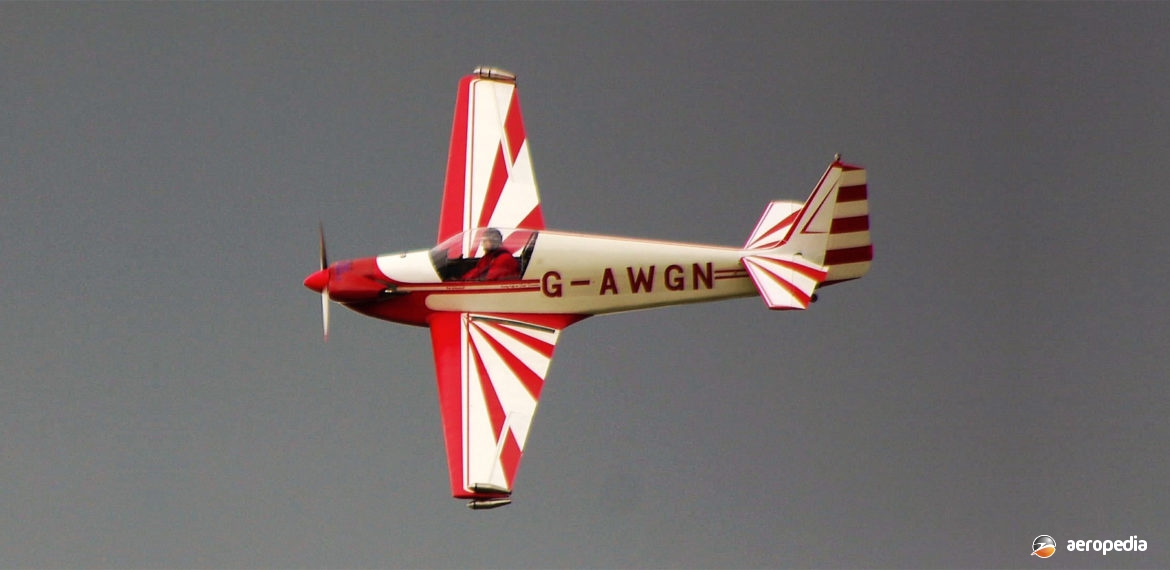Photograph:
Sportavia Avion Planeur RF-4 G-AWGN (c/n 4084) at Farnborough, United Kingdom in July 2012 (David C Eyre)
Country of origin:
Germany
Description:
Single-seat powered glider
Power Plant:
One 29 kw (39 hp) Volkswagen / Rectimo AR1200 four-cylinder horizontally-opposed air-cooled engine
Specifications:
- Wingspan: 11.26 m (36 ft 11¼ in)
- Length: 6.05 m (19 ft 10 in)
- Wing area: 11.30 m² (121 sq ft)
- Max speed at 1,000 m (3,280 ft): 198 km/h (123 mph)
- Economical cruising speed at 1,000 m (3,280 ft): 180 km/h (112 mph)
- Stalling speed: 73 km/h (45 mph)
- Landing run: 100 m (328 ft)
- Take-off run: 133 m (435 ft)
- Rate of climb: 180 m/min (591 ft/min)
- Max range with standard fuel: 680 km (423 miles)
- Fuel capacity: 38 litres (8.36 Imp gals)
- Empty weight: 272 kg (600 lb)
- Disposable load: 125 kg (275 lb)
- Loaded weight: 390 kg (860 lb)
History:
The RF-4 was one of a series of self-launched gliders designed by Rene Fournier in France. The first of the motor glider series of aircraft was the RF-01 (F-WJGX) built in a disused laundry in Cannes over a period of three years. It was flown at Cannes by Charles Fauvel on 6 July 1960 powered by a 19 kw (25 hp) converted Volkswagen engine but was lost in an accident a year later at an airshow at Dijon.
In 1962, following the receipt of financial assistance from the French Government, a new model was built known as the RF-2, being completed in the Pierre Robin Centre Est facility in Dijon and powered by a Rectimo AR.1200 engine. Two examples were completed for evaluation, the prototype (F-WJSR) being flown in June 1962, followed by the second (F-WJSY), which survives in the Musee de l’Air at Le Bourget.
The design was improved by the designer to the RF-3, which received Type Certification on 7 June 1963, a company being formed by Rene Fournier and Bernard Chauvreau known as Societe Alpavia at Gap-Tallard, some 88 production aircraft being completed.
In 1966 a new model, the RF-4, was completed, being improved and strengthened, stress levels being +11g/-6 G, the prototype of this model (F-BMKA) being built at the Alpavia facility. However, room to build the growing number of orders was required and production moved to the Sportavia-Putzer GmbH facility at Dahlem in West Germany from where 155 RF-4Ds were delivered.
Sportavia also produced a variant known as the SFS-31, which combined the fuselage of the RF-4D with the 15 m (49 ft) wings of the Scheibe SF-27M, but still utilising the Rectimo AR-1200 engine. The prototype of this model (D-KORO) flew for the first time on 1 August 1969. At one stage the RF-4 held the world height record for its class, with a soaring climb over the Pyrenees to 11,217 m (36,800 ft).
In 1979 Giles-Christian (Australia) Aviation Pty Ltd of Essendon, VIC announced it would be building a full range of German-designed powered gliders commencing in 1980, having obtained the world manufacturing licence. It was stated it would be the sole Australian and New Zealand representative for marketing, pre-delivery, assembly and eventually full Australian manufacturing of the Sportavia range of aircraft. A number of RF-4s have seen service in this region, including VH-XOS (c/n 20956).

